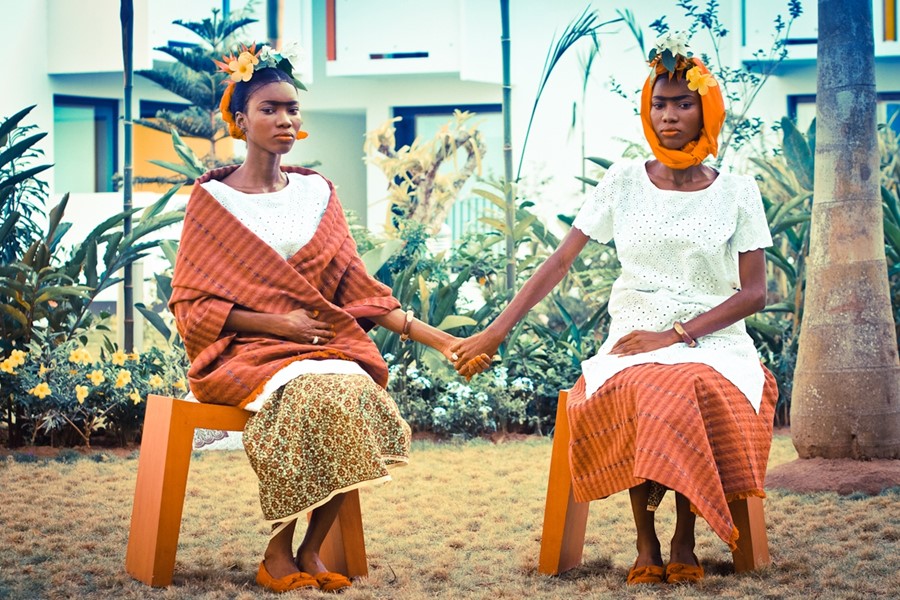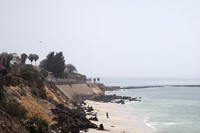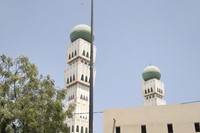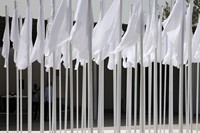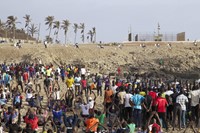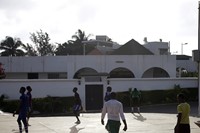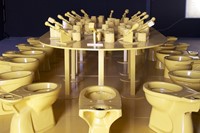Photographer Jackie Nickerson's visit to the 2014 Dakar Biennale created a unique perspective on the flourishing African art scene
Now in its 11th edition, Dakar Biennale of Contemporary Art (Dak’Art) is the most significant platform for African and diaspora visual arts on the continent. This year’s month-long event wrapped up earlier this month, having attracted curators, collectors and critics from around the globe to the capital to engage with artists who represent Africa’s growing clout in the international art world. AnOther contributing photographer Jackie Nickerson recently travelled to Senegal to capture the 2014 Biennale.
US-born, UK-based Nickerson has dedicated several bodies of work to Sub Saharan Africa including 2013’s Terrain, which revealed her preoccupations with agricultural laborours and their relation to the environment. On this, her first visit to Dakar she was as drawn to Dak’Art’s spectacles as she was to the cityscape itself. “Dakar has such a positive energy and is teaming with talent. I was particularly struck by the prevalence of street art,” she says.

The official Dak’Art programme comprised five exhibits featuring both established and emerging artists. Meanwhile the ‘Off’ schedule encompassed over 200 diverse shows in both Dakar and the ancient city of St Louis. Big draws included Julie Mehretu, Fabrice Monteiro, Abdoulaye Konaté, Mame-Diarra Niang, Soly Cisse and Wangechi Mutu. The latter’s video installation The End of Eating Everything depicted singer Santigold as a Medusa-like figure voraciously devouring everything in her path. The Kenyan artist’s comment on the ills of mass consumerism reflected the overarching theme of Dak’Art, ‘Producing the Common’. The biennale’s three curators Elise Atangana, Abdelkader Damani and Smooth Ugochukwu Nzewi invited artists who respond to current political and social issues, thereby creating a dialogue about the role of the individual in society. “We hope to reflect together on art and politics, and assert that being together is the only horizon for humanity," they state.
“Dakar has such a positive energy and is teaming with talent. I was particularly struck by the prevalence of street art” — Jackie Nickerson
Zambian newcomer Milumbe Haimbe was well received for her digitally illustrated comic strip starring black female super hero Ananiya, a rebel in a future where Earth is dominated by an evil corporation. Her work ruminates on the lack of representation of minorities in pop culture. Another crowd pleaser was Kiluanji Kia Henda’s O.R.G.A.S.M. (as god wants and devil likes it), an installation mocking the propaganda of western NGO interventions in Africa. The Angolan artist has invents his own NGO, the Organization of African States for Mellowness, which grants aid to Europe.
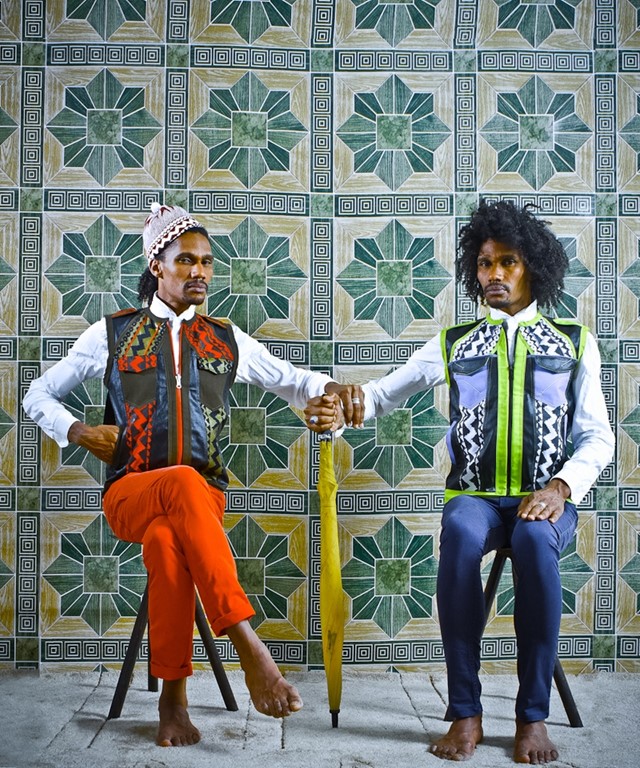
The biennale was originally established in 1989, and took its inspiration from Senegal’s first president Léopold Sédar Senghor who established the World Festival of Black Arts in 1966. The poet politician wanted to celebrate post independence Africa and to promote Negritude, his doctrine seeking to elevate the shared achievements of black people worldwide. The festival assembled voices from 45 countries including Duke Ellington, Wole Soyinka, Nelson Mandela and Josephine Baker. Senegal, a peaceful country steeped in a rich history of arts, music and culture, remains the ideal springboard for promoting Africa’s creative output beyond her borders.
"Senegal has been at the crossroad of various civilisations for centuries, thus our people have an ability to navigate between different contexts" — Omar Victor Diop
Young Senegalese photographer Omar Victor Diop is one such success story. He has exhibited globally and garnered interest for his portrait and fashion imagery, which draws on his heritage to develop a boundary-blurring aesthetic. For example his popular series Onomollywood (co-authored with US photographer Antoine Tempe) reimagined famous scenes from Hollywood films as if they’d been shot in Africa. “I’m attracted by ‘cultural creolisms’. By that I mean absorbing differing societies and personalities to create a new form of uniqueness,” he explains. “Senegal has been at the crossroad of various civilisations for centuries, thus our people have an ability to navigate between different contexts.”
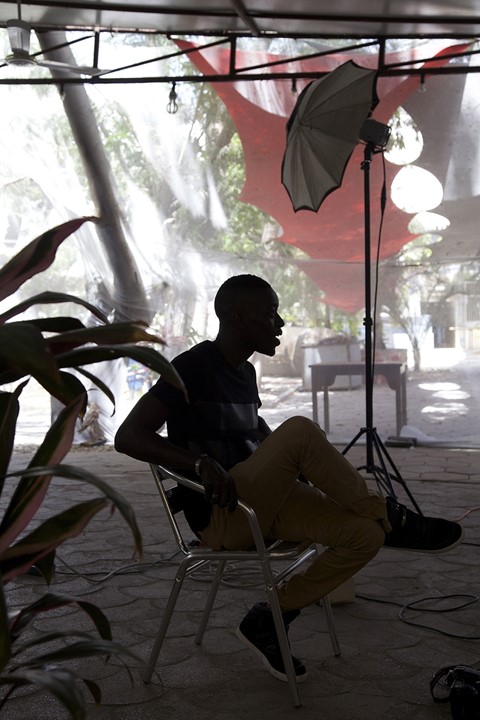
The legacy of West Africa’s early studio photographers such as Seydou Keïta and Malick Sidibé is evident in his on-going project, The Studio of Vanities, which he hosted at Dak’Art. Setting up at the Institut Francais for the opening week, over 100 creative souls dropped by to pose for him. “In every city of this part of Africa, there has long been a photographer who was in charge of building a collective visual memory in the form of portraits shot for special occasions. This has left behind an incredible archive of the early days of urban Africa and its first generations of young cosmopolitans. It is the duty of all artists to portray the realities, fantasies and aspirations of their people.”
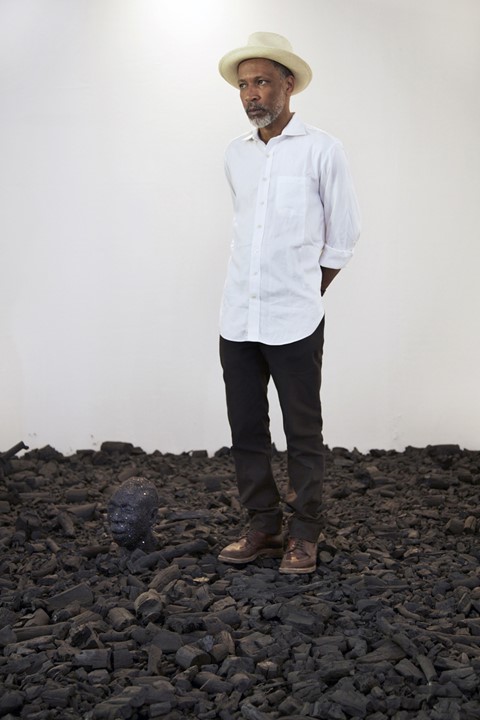
For renowned Atlanta-based artist Radcliffe Bailey it was significant to be exhibiting on African soil for the first time. “I had my DNA tested in 2005 and traced my roots back to Sierra Leone and Guinea Bissau. As an African American artist, understanding those missing lines and connections is important,” he says. Bailey’s artistic practice deals with issues of race, ancestry and family, often in relation to the slave trade and US civil war. His Dak’Art site-specific piece Storm At Sea, and related pieces such as Windward Coast, features an ocean made up of piano keys or ash, with a head adrift in the dark mass. “I’m dealing with those lives lost in the Middle Passage and also Hurricane Katrina. When it hit, many of my musician friends were evacuated from the community. The piano keys speak to the music that bonds us all. Our response to music is in our DNA,” he says. “My work is to do with memory becoming medicine. I make things so personal that they become universal.”
“My work is to do with memory becoming medicine. I make things so personal that they become universal” — Radcliffe Bailey
Inevitably some controversial exhibits were met with opposition. The Raw Materials Company’s group show Precarious Imaging: Visibility Surrounding African Queerness by artists including Andrew Esiebo, Amanda Kerdahi M and Zanele Muholi, reflected on homophobia on the continent, where being gay is illegal in 38 of 54 countries. Sadly the art centre was vandalised and its director Koyo Kouoh was later forced to close temporarily due to continued violent actions from religious groups. Despite this incident, and other logistical shortcomings such as artworks arriving late and abrupt schedule changes, Dak’Art was hailed an undoubted success. “Dak’Art was a whirlwind of people, art, dusty feet and taxis across the city,” says Touria El Glaoui, founder of London’s new contemporary African art fair 1:54. “The main exhibition brought the best-known names together while in the corners of Gorée island, you could stumble upon open houses, independent art centres, even pieces of art in a hairdresser’s window. Its model is vital as a platform for pan African art meeting global parameters.”
Text by Helen Jennings
